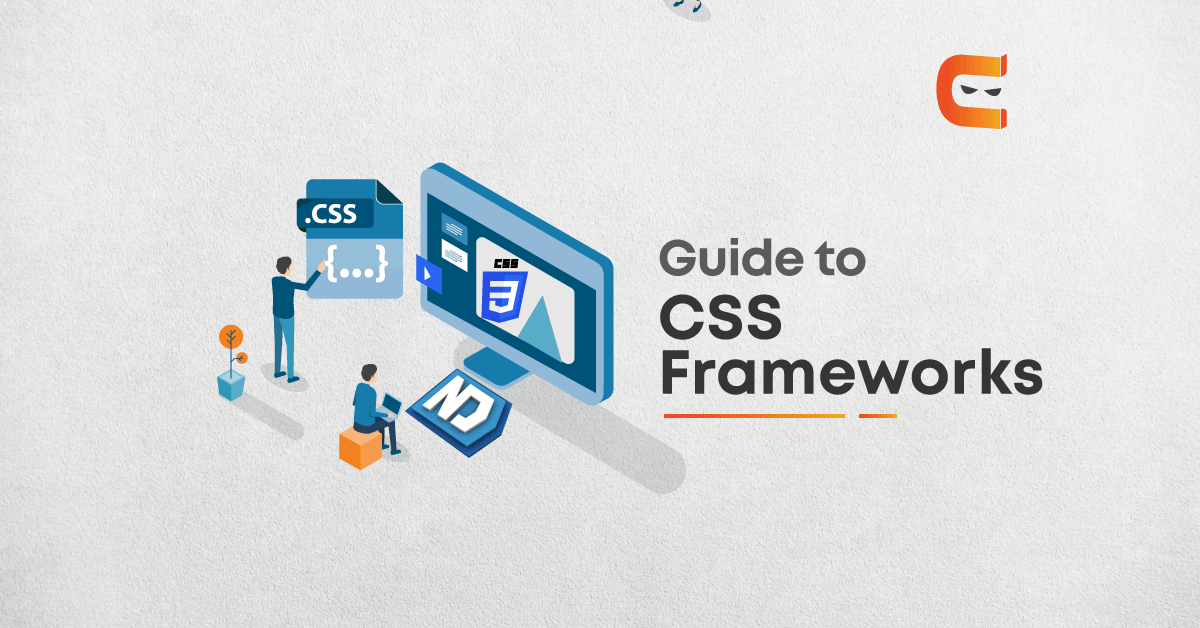Falling Style Sheets or essentially CSS are website architecture devices that different report content from archive introduction.
The outcome is an emotional reduction in the document move size. When you apply a change to the site’s CSS template, it can consequently ponder all the pages the same. CSS offers incredible plan consistency and offers a wide cluster of arranging alternatives.
Since we know how valuable CSS is for the two engineers and clients, the unavoidable issue actually remains, Which CSS structure do I pick? Taking into account that we have plenty of CSS systems available to us, each with their own preferred position, settling on the correct decision can be overwhelming.
Bootstrap: It is one of the most mainstream CSS Frameworks. The current adaptation of this system is Bootstrap 4, which was delivered in 2018. Numerous critical highlights were presented in this delivery, for example, new shading plans, new modifiers, new utility classes, and so forth. Likewise, adaptation 4 of Bootstrap is worked with SASS and that implies Bootstrap is presently upheld both LESS and SASS.

Why you should choose the Bootstrap CSS Framework?
- Time Saver: You don’t should be an expert coder to begin creating sites utilising Bootstrap. The frontend structure has astonishing documentation on every segment. With the underlying prepared to utilise parts, you can build up the sites a lot quicker! Additionally, because of the effortlessness of utilisation, you don’t need to sit around making sense of complexities.
- Forestall Any Browser Compatibility Testing Issues: Cross program testing is imperative for a webpage to chip away at all programs and gadgets to approve your site’s presentation over numerous programs. The most recent adaptation, for example, Bootstrap 4.0, is viable with all the most recent programs, guaranteeing that your components don’t have any program similarity testing issues.
- All around looked after Codebase: The upkeep group continually refreshes Bootstrap, on account of its developing fame. They additionally constantly test it against different advancements and programs.
- Better Consistency & Teamwork: Since the Bootstrap final product appears to be identical on all programs and stages, it kills irregularities among creators and engineers. On the off chance that another individual joins the group, the instructional exercise records make it simple to master everything about the frontend system. This prompts better collaboration in a firm.
Foundation: Establishment and Bootstrap are both the broadly utilised CSS systems. In any case, Foundation is a way more complex structure. It is truly adaptable and effectively adjustable. It is a valuable device to make responsive sites and web applications, particularly for the venture. Facebook, eBay, Mozilla, Adobe, HP, Cisco, and Disney use Foundation in their items.

Utilisation Statistics of The Foundation CSS Framework
- Ranked second in the class of, best CSS structures in 2020, for being generally famous by the State Of CSS review.
- 14.1% of the CSS designers have utilised it and might want to utilise it once more.
- Github-28.6k stars, 5.8k forks, and 984 givers.
Why choose Foundation CSS Framework?
- More Uniqueness: Establishment CSS Framework, empowers you to alter your site in a way with the end goal that it doesn’t look equivalent to different destinations utilising Foundation.
- Less CSS Bloat: Because of the inherent base CSS appearances, the CSS swell in HTML won’t be so a lot.
- Better Flexibility In Grids: You can without much of a stretch eliminate drains and breakdown segments, with the assistance of a ‘breakdown’ class. You can likewise make sections of equivalent size with the assistance of a square estimated framework. Together, these highlights establish an adaptable matrix.
- Gadgets: Establishment offers a simple position of site route as an afterthought to conceal it. You additionally get an HTML5 structure approval library, a table demonstrating membership based item costs, and alternatives to redo client experience as indicated by various gadgets.
Pure CSS: Unadulterated CSS highlights a lot of CSS modules that are ideal for various types of tasks. Despite the fact that the modules are little, they are responsive. Thus, you can without much of a stretch make sites that are responsive, quicker, and tastefully satisfying. The credit for the advancement of this CSS system goes to Yahoo. A portion of the notable highlights of the stage incorporates an underlying plan with high responsiveness and Standard CSS having a negligible impression. The best thing about Pure CSS is that it’s completely allowed to utilise!

Utilisation Statistics Of Pure CSS Framework:
- Ranked seventh in the class of, best CSS structures in 2020, for being generally famous by the State Of CSS overview.
- 5.44% of the CSS designers have utilised it and might want to utilise it once more.
- Github-20.8k stars, 2.1k forks, 59 benefactors.
Why choose Pure CSS Framework?
- Straightforward Customisation: The frontend structure gives architects an establishment to modify appropriately and fabricate their preferred plan.
- Program Compatibility Testing: The base of PureCSS depends on Normalise.css. The frontend system doesn’t have numerous program similarity testing issues, as the similarity issues go through successive fixing.
- Extensible: There is no requirement for overwriting existing CSS rules since the originators can without much of a stretch include new ones. Thusly, you can tweak the appearance as indicated by your undertakings.
- Lightweight & responsive: The 4.5KB minified + gzip record size makes the frontend structure lightweight. On the off chance that you make a site utilising PureCSS, it will update itself as indicated by the gadget the client sees it on. PureCSS has a versatile first liquid lattice with 12 sections that offer uphold for responsive classes for various screen sizes.
- Bulma: It is a Flexbox-based open-source and a standout amongst other CSS structures in 2020. In excess of 200,000 designers use it everywhere on over the world. It assists designers in seeing how they can systematise a segment. Regardless of whether you need a visual part, Bulma is here to your salvage.
Utilisation Statistics Of Bulma CSS Framework
- Ranked fifth in the classification of, best CSS structures in 2020, for being generally well known by the State Of CSS overview.
- 10% of the CSS engineers have utilised it and might want to utilise it once more.
- Github-39.5k stars, 3.3k forks, 303 supporters.
Why Bulma CSS Framework?
- Imaginative & Easier Designing: Bulma makes the creation and customisation of utilisations overly simple for designers. The incorporated Flexbox responsiveness empowers front-end engineers to work next-level and novel plans.
- Exhaustive Documentation: Bulma accompanies clear documentation. This encourages designers to effectively carry on their undertakings and have reinforcement for help.
- Adaptable: Bulma accompanies typography, structures, catches, tables and substantially more. This adds to a strong establishment and high flexibility of the structure. On the head of it, it’s stuffed with parts, for example, an answer for vertical arrangement, designs, and diverse media objects.
Semantic UI: An improvement system utilising human-accommodating HTML. Semantic UI is a responsive front-end system that utilises human-accommodating HTML. You can manufacture excellent, responsive formats with its 3000+ Theming Variables and 50+ UI Components. It additionally coordinated with a ton of outsider libraries, including React, Angular, Meteor, Ember and numerous different structures.

- Friendly Class names: The most noteworthy advantage of Semantic UI is it’s “human-accommodating HTML.” It implies that you can code utilising a characteristic language. Despite the fact that it makes them learn bend, the class names are entirely discernible and benevolent.
- Decent looking designs: Semantic UI has 3000+ Theming Variables, and every one of them are as responsive. Contrasted with Bootstrap 4, all formats made in Semantic are more delightful naturally.
More highlights of Semantic UI:
- Concise HTML
- Intuitive JavaScript
UI Unit: A lightweight and particular front-end structure for making quick and incredible web interfaces. UI Kit is a lightweight CSS and web UI plan system, which offers practically all the highlights of different structures. You can make straightforward, clean, and secluded web interfaces with its SVG symbols set, numerous segments, responsiveness, bound together styles, and customisation alternatives. In addition, you can likewise plan complex flexbox-based formats with UI Kit utilising plain HTML.

Why choose the UI Kit CSS Framework?
- Clear Engineering: UI Kit has unmistakably characterised shows and clean code which adds to a reasonable design.
- Accessibility of prepared to-utilise topics: You can pick your preferred topic starting from the drop menu of the site by downloading its LESS CSS, or SASS record. There is a wide assortment of prepared to-utilise subjects to choose from.
- Exceptionally Adjustable: Fashioners can make altogether new looks effectively, on account of the high adaptability of UIKit. The inherent liveliness highlights add to the inventiveness of a site.
Tailwind: It is a utility-first structure you can use for the quick structure of UIs. It’s a CSS library that is utility-based that favours reasonableness and speed over a semantic and lean markup. Everything you require to decide altogether is the extent of your task. In view of that, it’s anything but difficult to make a whole site without composing your own CSS.
Utilisation Statistics Of The Tailwind CSS Framework
- Ranked eighth in the classification of, best CSS structures in 2020, for being generally famous by the State Of CSS study.
- 4.9% of the CSS designers have utilised it and might want to utilise it once more.
- Github-69 stars, 13 forks, two benefactors.
Why choose the Tailwind Framework?
- Usability: When you know about the linguistic structure, Tailwind is very easy to utilise. You likewise don’t need to tab to and fro between your templates and HTML.
- Exceptionally Customisable: Tailwind has plenty of customisation choices. In addition, not at all like the other best CSS systems 2020, Tailwind doesn’t mention to you what your site ought to resemble.
Milligram:

A moderate CSS structure, Milligram is one of the lightest CSS structures that can assist you with planning quick and clean sites. The arrangement’s weight is 2KB (gzipped). However, in spite of its little size, Milligram accompanies a total arrangement of web advancement instruments. Designers can likewise utilise all the highlights offered by CSS3 determination with Milligram. These can add a lot of capacity to Milligram and made it one of the main three lightweight structures accessible.
Groundwork: It is essentially a basecoat of the world’s biggest network of designers, that is, Github. The credit for the production of this open-source device goes to certain driving forces who share an enthusiasm for CSS and HTML. Groundwork flaunts an efficient methodology that guarantees consistency in styles, for example, typography, separating and shading.
The straightforwardness of the structure is one of the primary purposes for it’s consistently developing notoriety. Additionally, the way that Github keeps up it adds to the believability of the Primer. It is a framework implied for building reliable and positive client encounters.
Utilisation Statistics Of The Primer CSS Framework
- Ranked eleventh in the classification of, best CSS systems in 2020, for being generally mainstream by the State Of CSS overview.
- 0.62% of the CSS engineers have utilised it and might want to utilise it once more.
- Github-92.5k stars, 15.9k forks, and 77 patrons.
Why choose Prime CSS Framework?
- Adaptable Typography: Groundwork offers textual style styles in a wide assortment of sizes and loads. This empowers designers to make styles that improve the intelligibility of a site and make it look engaging.
- Incredible Colour Scheme: Preliminary offers an extraordinary shading plan to add to the clearness of the substance. Shading utilities and factors additionally offer engineers topical styling choices without being attached with a particular structure.
- Composable Spacing Scale: The profoundly composable base-8 dispersing scale functions admirably with Github’s substance thickness. Cushioning spacers and edges give consistency to the flat and vertical mood.
Skeleton: It is one of the most straightforward and insignificant CSS structures out there on our rundown today. Fundamentally, it includes only 400 lines of codes making the entire bundle light-weight. While we have referenced it as a CSS structure, it doesn’t characterize itself like that. Nor is its a library or an even a module, yet it is a standard. Notwithstanding, it is valuable as far as making little or even small size of ventures and sites.
Stars Of Using Skeleton:
Effortless Usage: As it is pointed towards littler size of activities, utilizing this structure as a base is ideal for those searching for simply that. On the off chance that one has no prerequisites of the highlights that other bigger structures offer, at that point the quickest. successful and most effortless approach to complete things is this. It is truly adaptable and offers an assortment of alternatives despite the fact that there are constraints. Furthermore, it is best for amateurs and tenderfoots showing signs of improvement information and knowledge for future undertakings.
Things You Should Consider Before Choosing a CSS Framework
On the off chance that you will manufacture a webpage with a lot of pages, using some kind of pre-collected system or structure can manage the everyday work of site design. Structures do things like figuring the widths for segments, setting typographic rhythms, and ensuring that all of your pages have the right doctype, character set, and scripting dialects. There are different things to picking a structure than just knowing the decisions it offers. You’ll need to consider components like these:
- What kind of CSS framework your site needs?
- Structure language
- Structure features
- Whether the framework is versatile and segregated?
What Type of CSS Framework Do You Need?
In the first place, you need to know something about your site. Does it at any point need a framework? Most objections with various pages profit by structures. The right number of pages can change, yet if you wind up repeating a comparable HTML, CSS, or even JavaScript on one of your pages, a format or structure could offer help.
Most structures incorporate a huge amount of extra HTML, CSS and JavaScript to the pages. In the event that you’re endeavouring to keep information transmission low for your customers, you probably won’t want to use a framework in any way shape or form, or just use irrelevant proportions of the structure. A couple of frameworks offer instruments to assist you with manufacturing a type of structure with simply the segments your site needs.
Conclusion
It’s sheltered to accept that CSS for website composition is here to last. All systems that I’ve referenced above have their own arrangement of advantages and disadvantages. Obviously, your business conditions majorly affect which one you wind up picking. Contingent upon the prerequisite of your venture, you can choose the CSS structure likewise. Additionally, you have to ensure that you perform intensive cross-program testing on this diverse frontend structure to ensure that there are no program similarity testing issues.
To read more on web development, click here.
By Akhil Sharma















Leave a Reply